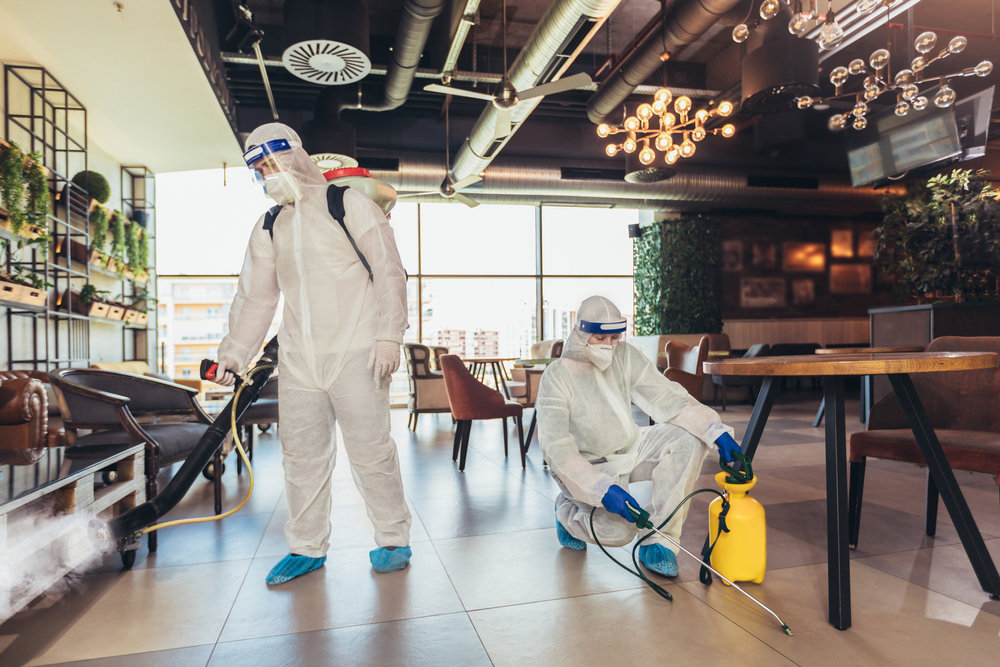The Ultimate Guide to Antibacterial Disinfectants: Killing Germs and Keeping Surfaces Safe
Are you looking for the most effective way to keep your home and workplace clean and safe from harmful germs?
With an exponential increase in contagious diseases, keeping your surroundings germ-free has become a rising concern.
This is where antibacterial disinfectants play an important role in keeping various surfaces safe while providing the ultimate protection against germs.
In this comprehensive guide, we will explore different types of antibacterial disinfectants, their common applications, safety measures, and more, to help you make well-informed decisions when selecting a product for your specific needs.
So, let's dive in and find out how to kill those pesky germs and keep surfaces safe!
What are Antibacterial Disinfectants?
Antibacterial disinfectants are chemical agents specifically formulated to destroy or inactivate germs, such as bacteria, viruses, and other microorganisms, on different surfaces.
They come in a variety of forms, including liquids, sprays, wipes, or powders, and are commonly used in residential, commercial, and industrial settings.
Using these disinfectants regularly can help prevent the spread of infections and diseases and contribute to a cleaner, healthier environment.
The Science Behind Disinfection
Disinfection is the process of killing or inactivating microorganisms present on surfaces, aiming to reduce the risk of infection.
Disinfectants work by either destroying the cell walls of microorganisms or damaging their proteins, rendering them harmless.
The effectiveness of a disinfectant depends on factors such as its concentration, contact time, and the presence of organic matter, among others.
Common Applications of Disinfectants
Disinfectants have widespread applications across various sectors, including residential, commercial, medical, and industrial.
Some common uses of Antibacterial disinfectants include:
- Home cleaning: Keeping surface areas, such as kitchen countertops, bathroom fixtures, and floors free of germs
- Childcare facilities: Ensuring that toys, play areas, and surfaces are sanitized after each use
- Healthcare: Sterilizing medical equipment, decontaminating patient rooms, and maintaining overall hygiene in healthcare facilities
- Food sector: Disinfecting food preparation spaces and utensils, and maintaining cleanliness in eateries
- Educational institutions: Sanitizing classrooms, desks, and other commonly-touched surfaces
- Sports and recreation: Cleaning gym equipment, sporting facilities, and locker rooms
Types of Disinfectants
There are a variety of disinfectants available on the market, each differing in their mode of action and level of effectiveness.
Some common types of antibacterial disinfectants include:
- Alcohols: Rapidly evaporating solutions that are effective against a wide range of bacteria and viruses.
- Quaternary Ammonium Compounds (QACs): Highly effective against a broad range of germs and can be used on various surfaces.
- Phenolics: Versatile and effective against bacteria, fungi, and viruses but may require a higher concentration to be effective.
- Chlorine Compounds: Highly potent and effective against a wide range of microorganisms; however, they can be corrosive and require proper handling.
- Iodophors: Suitable for application in both medical and non-medical environments, offering a balance between effectiveness and low toxicity.
Making a Choice: Factors to Consider
When choosing the right disinfectant for your needs, it is essential to consider the following factors:
- The kind of the germs you're targeting
- The type of surface you'll be cleaning
- The residue and odor left behind
- The concentration of the product
- Environmental impact and toxicity
- The cost of the disinfectant
The Disinfection Process Explained
To ensure optimal effectiveness of the disinfectant, follow these steps:
- Clean the surface using soap & water to remove visible dirt, dust, and debris.
- Apply the disinfectant according to the manufacturer's instructions, ensuring appropriate concentration and contact time.
- Allow the surface to air dry, as wiping it down before the required contact time can affect the disinfectant's effectiveness.
The Rise of Natural Disinfectants
Given the concerns about environmental impact and toxicity of some disinfectants, natural alternatives have gained popularity.
Some natural disinfectants include:
- Vinegar: A natural cleaner and disinfectant that can be used on various surfaces.
- Hydrogen Peroxide: A potent oxidizing agent with antimicrobial properties.
- Tea Tree Oil: A natural antiseptic with proven antimicrobial properties.
- Thymol: A compound derived from thyme oil with antibacterial & antifungal properties.
Safety Guidelines and Precautions
When using antibacterial disinfectants, it's crucial to follow these safety measures:
- Always read and adhere to the manufacturer's instructions for use, concentration, and contact time.
- Wear personal protective equipment, such as gloves and eye protection.
- Store disinfectants safely out of reach of children and pets.
- Ensure proper ventilation during the application process.
- Do not mix disinfectants with other chemicals, as this can result in harmful reactions.
Conclusion and Taking Action
By now, you should have a more understanding of what antibacterial disinfectants are, how they work & applications to suit your specific needs.
Whether it's keeping your home clean or maintaining a safe workspace, using effective disinfectants can keep you and those around you protected from harmful germs.
To make the most out of your germ-fighting efforts, remember to choose the right product for your needs, follow the manufacturer's recommendations, and practice appropriate safety measures.
Good luck in your quest to kill germs and maintain a healthy environment!



.jpg)


Post a Comment